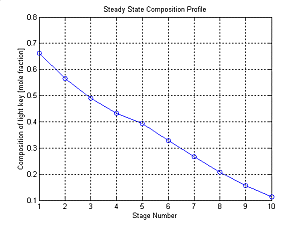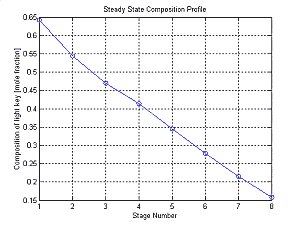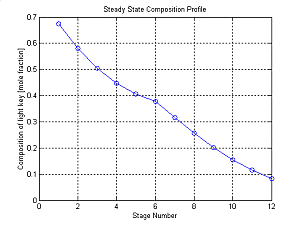|
It can be deduced from the previous
section on distillation column design
that the number of trays will influence the degree of separation.
This is illustrated by the following example.
Consider as a base case, a 10 stage column. The feed is a
binary mixture that has a composition of 0.5 mole fraction in
terms of the more volatile component, and introduced at stage
5. The steady-state terminal compositions of about 0.65 at the
top (stage 1) and 0.1 at the bottom (stage 10) are shown below:

Composition Profile: 10 stages, feed at stage 5
Suppose we decrease the number of stages to
8, and keep the feed at the middle stage, i.e. stage 4. The
resulting composition profile is:

Composition Profile: 8 stages, feed at stage 4
We can see that the top composition has decreased while the
bottom composition has increased. That is, the separation is
poorer.
Now, if we increase the number of stages to
12, and again introduce the feed at mid-column, i.e. stage 6,
the composition profile we get is:

Composition Profile: 12 stages, feed at stage 6
Again, the composition has changed. This time the distillate
is much richer in the more volatile component, while the bottoms
has less, indicating better separation.
Thus, increasing the number of stages
will improve separation.
|

